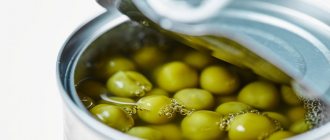White turnips contain 28 kcal, and black turnips - 37, but they are the healthiest. Find out more about the calorie content of this vegetable and its medicinal properties, get 5 delicious dietary recipes with turnips for your menu.
Author: Kristina Lobanovskaya, doctor, practicing nutritionist Article updated: 11/09/2020
Turnip can easily be called the most ancient vegetable crop: its history goes back about four thousand years. This vegetable was cultivated in Ancient Rome, Egypt, and Greece. Attitudes towards it were different - the Greeks and Egyptians considered it the food of the poor, and the Romans used the vegetable for festive meals. Before the appearance of potatoes in Rus', the main garden crops were turnips and rutabaga. These vegetables are perfectly stored until spring, almost without losing their nutritional qualities.
Turnip is a representative of the cruciferous plant family, belongs to the cabbage genus, the Latin name is Brassica rapa. It bears fruit in the first year, but if the root crop is left in the soil, in the second year it will shoot a flower and produce seeds. The round-shaped vegetable comes in different sizes and, depending on the variety, can weigh from 100 to 500 g.
Turnip is a very useful product. It combines high nutritional qualities with numerous medicinal properties. It saturates perfectly, but does not create fat reserves in the body, as it has low calorie content. The presence in this vegetable of a universal complex of vitamins, mineral salts, essential oils, organic acids, and plant fiber has a positive effect on all body systems.
They eat turnips raw, boiled, stewed, baked, fried, use them as a seasoning for soups and main courses, add them to sauces, and prepare vegetable cocktails and smoothies from them. The tender, juicy pulp of the root vegetable is quickly digested, which makes it possible to use it for dietary and baby food.
This vegetable crop has a lot of healing qualities:
- stimulates the production of gastric secretions;
- improves intestinal motility;
- has anti-inflammatory, diuretic, expectorant effects;
- promotes the dissolution of kidney stones and salt deposits in the joints;
- normalizes blood sugar levels;
- improves metabolism;
- reduces the level of “bad” cholesterol;
- removes excess fluid;
- helps cleanse the intestines of toxins;
- has a mild sedative effect, improves sleep;
- suppresses the development of pathological microflora in the intestines;
- has a positive effect on the cardiovascular and genitourinary systems, improves brain function;
- maintains visual acuity;
- increases immunity;
- improves the condition of skin, hair, teeth, prevents baldness;
- The decoction relieves toothache, relieves inflammation of the mucous membrane with tonsillitis, laryngitis, nasopharyngitis.
This vegetable contains natural antioxidants that help cleanse the liver and blood, has anti-inflammatory properties, and is an excellent remedy for colds. Due to its high fiber content, it has a beneficial effect on the functioning of the digestive system.
Today there are about 20 cultivated varieties of Brassica rapa. There are white turnips, which have the most delicate structure and a weakly pronounced aroma, yellow ones - very juicy, with a pronounced taste, pink, purple, green, bronze. The black one is considered the most useful; it contains a record amount of minerals and natural antibiotics. A special variety is leaf turnip; it does not form a root vegetable; its tender leaves, which taste like lettuce, are eaten. Brassica rapa varieties differ slightly in energy value: for example, the calorie content of yellow turnips is 30 kcal/100 g, white - 28 kcal/100 g, black - 37 kcal/100 g.
Despite the large number of advantages, turnips can be harmful. In its raw form, this vegetable can cause increased gas formation or bloating, and provoke irritable bowel syndrome. This product is contraindicated for use if:
- gastritis, colitis or ulcers of the stomach and duodenum;
- acute kidney diseases;
- cholecystitis (inflammation of the gallbladder);
- hepatitis (liver inflammation);
- inflammation of the thyroid gland;
- individual intolerance.
The side effects from eating the vegetable will be much less if it is subjected to heat treatment. Boiled or baked turnips can be eaten even by those for whom it is contraindicated in its raw form. Its fairly modest nutritional value allows it to be included in diets for weight loss. The calorie content of turnips depends on the cooking method.
What is a turnip?
The plant known to botanists as Brassica Rapa is what we call turnip. This root vegetable with white, greenish or purple-red skin belongs to the Cruciferous family and has been growing throughout the world since ancient times. Today, about 30 varieties of “domesticated” turnips, a close relative of the wild turnip, are grown commercially.
Content:
- What is a turnip?
- Nutritional characteristics
- Benefits for the body
- Turnip in folk medicine
- Possible dangers
- Use in cooking
- Culinary ideas
- Other uses for turnips
It is believed that the first wild turnips appeared in Europe, Central Asia and the Middle East. Researchers suggest that this root vegetable saved people from famine 4,000 years ago. The first to engage in mass cultivation of turnips were the Hellenes and the ancient Romans. Although already in ancient times, turnips were primarily food for the poor.
This vegetable has more than once protected humanity from starvation, but even this did not help it enter the rank of “elite” and respected. For centuries, turnips in different countries were considered food for slaves and livestock. And not the least role in this was played by the specific mustard flavor of the root vegetable.
True, in Rus' turnips were the main thing on the tables. In those ancient times, it was used almost the same way we use potatoes today. Everything changed when Catherine the Second accustomed her subjects to potatoes, which were fashionable at that time, and turnips remained only on the tables of the poor who could not afford potatoes. By the twentieth century, the descendants of the Russians had practically forgotten about this vegetable. Although even today this plant is cultivated in almost all countries, even in tropical regions, it takes root there only in the highlands.
Nutritional characteristics
Despite its unpopularity, turnip is a healthy and nutritious vegetable, a source of important substances for humans.
Thus, 100 g of root vegetables contain about 30 mg of vitamin C, a powerful antioxidant important for maintaining immunity and tissue repair. Turnips also provide most of the B vitamins that the body needs daily. B-vitamins are necessary for the proper metabolism of fats, carbohydrates and proteins, they are indispensable for the nervous system, and are responsible for the health of the skin, hair, liver and eyes.
A little more than 75 mg of calcium (about 8 percent of the daily value) is contained in a 100-gram turnip. The vegetable is also rich in potassium, which is important for maintaining blood pressure and fluid balance in the body. The root vegetable contains iron, magnesium, phosphorus, sodium, zinc, manganese, selenium and a large number of amino acids.
And in addition to all the mentioned benefits, it is important to say that this vegetable is a dietary product suitable for people on a diet. If a 100-gram serving of boiled potatoes contains almost 200 kilocalories, then the same amount of turnip puree is only 51 kcal. At the same time, the puree contains quite a lot of fiber, which significantly increases the ability of the root vegetable to satisfy hunger and keep you full for a long time.
But besides the root vegetable, the greens of the vegetable are also edible and healthy. The dark young leaves contain more than the daily requirement of vitamins A and K, and the tops are also rich in vitamin B9, ascorbic acid, calcium, iron, fiber and carbohydrates.
Nutritional value per 100 g of root vegetables
| Calorie content | 28 kcal |
| Squirrels | 0.9 mg |
| Fats | 0.1 mg |
| Carbohydrates | 6.43 mg |
| Cellulose | 1.8 mg |
| Vitamin C | 21 mg |
| Vitamin E | 0.03 mg |
| Vitamin K | 0.1 mcg |
| Vitamin B1 | 0.04 mg |
| Vitamin B2 | 0.03 mg |
| Vitamin B3 | 0.4 mg |
| Vitamin B5 | 0.2 mg |
| Vitamin B6 | 0.09 mg |
| Vitamin B9 | 15 mcg |
| Potassium | 233 mg |
| Sodium | 39 mg |
| Zinc | 0.27 mg |
| Manganese | 0.13 mg |
| Magnesium | 11 mg |
Nutritional value per 100 g of turnip greens
| Calorie content | 20 kcal |
| Squirrels | 1.1 g |
| Fats | 0.2 g |
| Carbohydrates | 4.4 g |
| Cellulose | 3.5 g |
| Vitamin A | 381 mcg |
| Vitamin B9 | 118 mcg |
| Vitamin C | 27 mg |
| Vitamin K | 368 mcg |
| Calcium | 137 mg |
For men
1. Turnip is useful for men to consume, because it enhances their sexual performance. Daily consumption of this healthy root vegetable increases potency without drugs, because testosterone production increases.
2. Many men do not forget about sports. Turnip reduces pain that occurs with inflammation in the joints. For treatment, boiled turnips should be mashed and applied to the sore spot, secured with a bandage and left from evening until morning.
3. Vitamin B normalizes the amount of male hormones and increases their attraction to the opposite sex.
4. Thanks to its diuretic and anti-inflammatory properties, eating this healthy vegetable helps treat prostatitis.
5. In Rus', men used to eat boiled turnips with lean meat 2 times a day to strengthen erections.
Turnip for children
Benefits for the body
Plant-based foods are beneficial for preventing obesity, diabetes, heart disease, and improving overall health and appearance.
But in addition to these benefits common to vegetables, turnips also have their own list of beneficial properties.
Reduces blood pressure
Several years ago, British researchers determined that this root vegetable has several cardiovascular benefits. These include the ability to lower blood pressure and prevent excessive platelet production. The potassium contained in the vegetable also helps relax blood vessels and gently lower blood pressure.
Protects against cancer
At the end of the last century, scientists declared that cruciferous vegetables have the ability to prevent cancer. All vegetables in this group contain sulforaphane. It is this compound that gives the fruit a bitter taste, but at the same time has the power to prevent malignant degeneration of cells. In the laboratory, sulforaphane has been proven effective in slowing down the division of cancer cells.
Promotes proper digestion and detoxification
Turnip is a vegetable high in fiber, which is known to be indispensable for maintaining a healthy rhythm of the digestive organs. Dietary fiber not only promotes rapid digestion of food, but also maintains stable blood sugar levels. This last fact suggests that the fiber contained in turnips supports healthy metabolic processes. In addition, insoluble fiber has the ability to absorb toxins accumulated in the body and quickly remove harmful substances.
Prevents diverticulosis
The risk of developing diverticulosis is significantly lower in people whose diets are rich in fiber-rich vegetables. Turnips just meet these requirements. Raw and cooked root vegetables are rich in dietary fiber, which means they promote easy bowel movements and reduce blood pressure and inflammation in the colon.
Improves vision
Vitamin A isn't the only thing that's good for your eyes. Moderate intake of vitamin C has also been scientifically proven to help maintain healthy eye function and protect against UV damage. Many people think that citrus fruits are perhaps the only source of ascorbic acid. This may come as a revelation to some, but cruciferous vegetables also contain surprisingly high supplies of the vitamin. Only two small turnips can provide the body with vitamin C in the amount necessary for daily needs.
Antimicrobial and anti-inflammatory
Turnip greens contain rich amounts of glucosinolates. These are sulfur-containing compounds that have anti-cancer properties and also protect against fungi, bacteria and prevent inflammation. By the way, among all cruciferous vegetables, turnips are second only to mustard in terms of the amount of this substance they contain.
What else is turnip good for:
- This root vegetable is a good anti-inflammatory and relieves asthma symptoms.
- Thanks to vitamin C, the vegetable is useful in preventing scurvy.
- Root vegetables and tops are rich in antioxidants, which protect the body from free radicals, thereby preventing the development of atherosclerosis and destruction of blood vessels.
- Ascorbic acid makes the root vegetable useful for smokers: it has a beneficial effect on the condition of the lungs.
- Strengthens bones and teeth, prevents osteoporosis and reduces the risk of developing rheumatoid arthritis.
- The nutrients contained in turnips help restore connective tissue within the body.
- Strengthens the immune system.
- Promotes healthy metabolism.
- Improves the functioning of the nervous system and liver.
- Prevents the formation of gallstones.
- Activates healthy hair and nail growth.
What are the benefits of turnips for the body?
The chemical composition determines the quite diverse medicinal properties of turnips:
- anti-inflammatory;
- cleansing;
- diuretics;
- antiseptic;
- general strengthening;
- wound healing;
- antimicrobial;
- sedatives;
- anti-aging;
- painkillers;
- immunomodulating;
- tonic.
The usefulness of turnips is manifested in the ability to cleanse the body of harmful compounds and toxins. The pleasant-tasting root vegetable helps regulate metabolic processes, normalize the functions of the digestive tract, activate the production of gastric juice, and strengthen the nervous system.
The benefits of turnips for the body are noted in the treatment of bronchitis, flu, colds, acute respiratory viral infections, coughs, joint diseases, and anemia. This vegetable variety allows you to cleanse the blood and strengthen the gums. Healthy root vegetables alleviate the condition of certain diseases of the gastrointestinal system and soften asthma attacks.
Recommended for use in cases of vitamin deficiency, uncomplicated diabetes mellitus, scurvy, insomnia, and hypertension. Healthy, tasty root vegetables prevent the risk of stones, improve intestinal motility, and reduce cholesterol concentrations. Heal skin lesions, relieve toothache.
The beneficial properties of turnips are used in home cosmetology. The use of grated root pulp in masks helps restore the elasticity of the skin, smooth out wrinkles, and strengthen hair.
Due to its low calorie content, this healthy vegetable crop is recognized in nutrition. Quickly satisfies hunger, helps reduce appetite, qualitatively saturates the body for a long time, promoting weight loss.
Benefits for women
Thanks to its rich chemical composition, the benefits of turnips for women are manifested in a variety of ways:
- normalization of hormonal levels;
- improving the functions of the reproductive system;
- reduction of menstrual pain;
- reducing the intensity of bleeding;
- prevention of osteoporosis;
- rejuvenating effect.
It is recommended to use healthy turnips during pregnancy after obtaining a doctor’s permission, since it contains important elements (calcium, folic acid, iodine, phosphorus, zinc and others) to ensure the normal intrauterine development of the child.
By normalizing the functioning of the nervous system, the risk of seizures is reduced, especially during the third trimester. The diuretic properties found in turnips help reduce swelling.
During pregnancy, turnip replenishes vitamin deficiencies, copes with toxicosis, and eliminates insomnia.
It is advisable to consume this vegetable crop raw 1-2 times a week. It is recommended to give preference to baked, boiled, stewed healthy root vegetables. Avoid such dishes in the evening due to the diuretic effect.
Turnip is introduced into the mother's diet during breastfeeding, when the baby is 1-2 months old. This will avoid problems in the functioning of the newborn’s gastrointestinal system. Then the nursing woman consumes the tasty, healthy vegetable, starting with small portions, and monitors the reaction of the child’s body.
Any manifestations of intolerance during breastfeeding - skin rash, intestinal disorders serve as a signal that it is worth giving up the healthy root vegetable for several months.
How it will help men
Turnips are useful for men because they help replenish the deficiency of B vitamins, which are essential for the normal functioning of the reproductive system.
This effect improves libido and strengthens erection. The inclusion of glucoraphanin in healthy root vegetables ensures the prevention of the development of malignant tumors and diabetes - diseases that provoke a decrease in potency.
Sedative qualities help solve the problem of psycho-emotional disorders, which are often the cause of impotence.
The ability of this variety of vegetables to increase blood flow is noted, which has a beneficial effect on the functioning of the male genital organs.
To experience the benefits and beneficial effects of turnips on men’s health, you need to drink 100 ml three times a day. juice squeezed from raw root vegetables, with honey added to taste.
For children
Turnips are included in the diet of children starting from the age of six months. Start similar healthy vegetable complementary foods with 1 tsp. twice a week. If there are no negative reactions from the baby’s body in the form of diarrhea or skin rash, then gradually increase the portion to 50 grams.
From the age of two, children should be given healthy turnips every three to four days, given that they saturate the body with essential minerals and vitamins, activate brain activity, regulate intestinal functions, and strengthen the immune system.
Turnip in folk medicine
A decoction of the leaves and stems is believed to be useful in treating cancer. Boiled turnips with lard are mentioned in some folk recipes as a remedy for breast cancer. Dried flowers and vegetable seeds help fight malignant formations in skin cells. The seed pulp is also used to treat burns. In South Korea, turnip is known as a diuretic and a natural cure for jaundice and digestive disorders. In Iran, root vegetables boiled with salt are given to people with severe coughs and colds. In Rus', turnip juice was used to treat sore throats, and a decoction was used to treat asthma, tachycardia and insomnia. Warm pulp from boiled or baked root vegetables was applied to joints affected by gout.
Home cosmetology
All varieties of turnips contain a huge amount of nutrients. Therefore, the vegetable is used not only to nourish and treat the body from the inside, but also to nourish the skin and hair.
In home cosmetology, turnip is used together with other nutritional ingredients. For example, you can use a special face mask to care for your skin. It will help tighten the oval a little, remove fine wrinkles, moisturize and normalize the functioning of the sebaceous glands.
To prepare the mask you will need:
- steamed turnips, crushed to puree;
- 1 tsp. olive oil (can be replaced with low-fat sour cream).
Mix both ingredients and distribute evenly over the face. Do not rinse for about 15–20 minutes.
Regular use of this product will help cope with various types of irritations and make the skin more elastic and smooth.
For dry and sensitive skin, you should use another, no less effective mask. You will need 2 tbsp. l. pre-chopped turnips, to which add the same amount of olive oil and 1 part honey. The mixture is stirred until smooth, and after applying to the face, wait 15–20 minutes.
It is recommended to wipe your face with fresh fruit juice to reduce the risk of acne. This seemingly simple remedy promotes the speedy healing of ulcers on the epidermis.
For dull, weak and hair loss-prone hair, a mixture that contains:
- 4 tbsp. l. freshly squeezed turnip juice;
- 1 tsp. onion juice;
- 1 tbsp. l. burdock oil.
All ingredients are mixed and gently rubbed into the scalp. Thus, the hair roots are nourished and moisturized, and the hair follicles are actively stimulated. With constant use, the mask can significantly improve the condition of the hair.
Possible dangers
Like other members of the cruciferous family, turnips contain glucosinolates. Excessive consumption of this substance impairs the production of thyroid hormones. This fact makes turnips an undesirable product in the diet of people with gland dysfunction.
Greens contain small amounts of oxalic acid, which, when ingested, can crystallize and form stones in the kidneys and urinary tract.
It is undesirable for people with gastritis, ulcers, colitis and gastroenteritis, as well as inflammation of the kidneys and liver, to consume raw root vegetables.
Contraindications
Due to the high content of essential oils, there are a number of contraindications for consuming turnips.
Eating a large amount of vegetables out of habit can cause gas formation in the intestines.
People with the following health problems should not abuse the product:
- inflammation of the gastrointestinal tract;
- stomach and duodenal ulcers;
- gastritis of any type;
- malfunction of the thyroid gland;
- chronic liver and kidney diseases.
Patients with pancreatic diseases, including diabetics, can eat turnips only after the permission of the attending physician.
When consuming root vegetables, like any other medicinal product, you should observe moderation. It is enough to eat no more than 300 g per day. In order not to harm the body, improve the digestibility of the vegetable and prevent the formation of gases in the intestines, it is better to eat the product heat-treated - boiled or steamed.
Use in cooking
Turnips taste like a cross between potatoes and carrots, but with a hint of mustard. Young root vegetables can be eaten raw and added to salads. Older ones are usually boiled, used for making soups, stews, vegetable purees, pickled and baked. Ripe turnips have tougher skin but also a more intense flavor. Thanks to its special taste, the vegetable goes well with meat, in particular pork.
In Italy, a popular side dish is prepared from the root vegetable; this vegetable is used in the cuisines of India and Pakistan, and a traditional winter salad is prepared from raw grated turnips and fresh herbs in the Tyrolean Alps. In Lebanon they eat it pickled, and in Japan they like it fried.
Some also use young turnip leaves for food. Salads are prepared from them, seasoned with lemon juice and vegetable oil.
At what age can you give your child turnips?
1. A healthy vegetable can be given to a child from the age of 3, but gradually and little by little. But a small and boiled piece of turnip can be given to the baby with the appearance of his first teeth.
If the baby feels well, then the portion of turnip should be gradually increased to 50 grams.
The baby will appreciate the taste of turnips and prefer it to overseas fruits. The root vegetable can be added to puree with carrots, zucchini, and potatoes.
If the baby abruptly refuses turnips, then including it in the baby’s diet will have to be postponed, at least for half a month. Maybe he'll like turnips later.
2. The carbohydrates found in root vegetables reduce the risk of fermentation in the baby’s intestines and prevent constipation.
3. Turnip improves the absorption of iron in the baby's body, which is necessary for brain development.
What to cook from turnips.
Culinary ideas
Cream soup
You will need 3 large turnips, 2 carrots, celery, 1 liter of chicken broth, parsley, onion, salt, pepper. While finely chopped onions are fried in vegetable oil, cut the vegetables into small pieces, add chicken broth and boil until tender. Add spices to the finished soup and grind everything in a blender until smooth. Add fried onions. Chopped herbs and sunflower seeds are suitable for decorating a plate of cream soup.
Turnip fritters
Mix grated root vegetables, carrots, onions, egg, spices and a little flour. You should get a homogeneous mass without lumps. Fry the pancakes in a hot frying pan in a large amount of vegetable oil.
Light salad
Ingredients for the salad: 500 g turnips, 1 carrot, 150 g crab sticks, half a can of corn, parsley and green onions, salt, pepper, garlic clove, mayonnaise.
Grate raw turnips and carrots. Cut crab sticks into small cubes. Add the rest of the ingredients and mix. Decorate with greens.
Turnip and pear salad
Grate one turnip, two carrots and three pears on a coarse grater. Add a spoonful of lemon juice, salt, pepper and a little sugar. Season the finished salad with sour cream or natural yogurt.
Fresh
Any vegetable contains the most beneficial substances in its fresh form. The energy value of raw turnips is 31.73 kcal per 100 g, which makes it a real boon for those who are struggling with excess weight. Nutritionists advise obese people to replace potatoes with turnips in all dishes, and to reduce the bitterness that raw root vegetables have to some extent, they recommend dousing them with boiling water before cooking. However, adding raw vegetables to your diet should be done with caution. Due to the presence of a number of contraindications to its use, it is advisable to first consult a gastroenterologist.
Sandwiches, salads are prepared with turnips, and they are combined with other vegetables or fruits when preparing fresh juices or smoothies. The Chinese eat root vegetables cut into thin strips and dried with soy sauce, and in Italy thin slices of the vegetable are smeared with honey or molasses, placed in a jar and left for a day in a cool place. The result is delicate transparent candied fruits.
“Vitamin” sandwiches are very tasty. Preparing them is very simple: spread lightly salted curd mixture on rye or bran bread, and decorate it with thin slices of black turnip on top. A smoothie can be prepared by grinding pieces of ripe turnip, cucumber and tomato in a blender and adding apple juice to the mixture.
Salads with raw turnips can serve as an excellent “accompaniment” for main courses. Here are several food kits for such salads.
| Option 1 | Option 2 | Option 3 |
|
|
|











